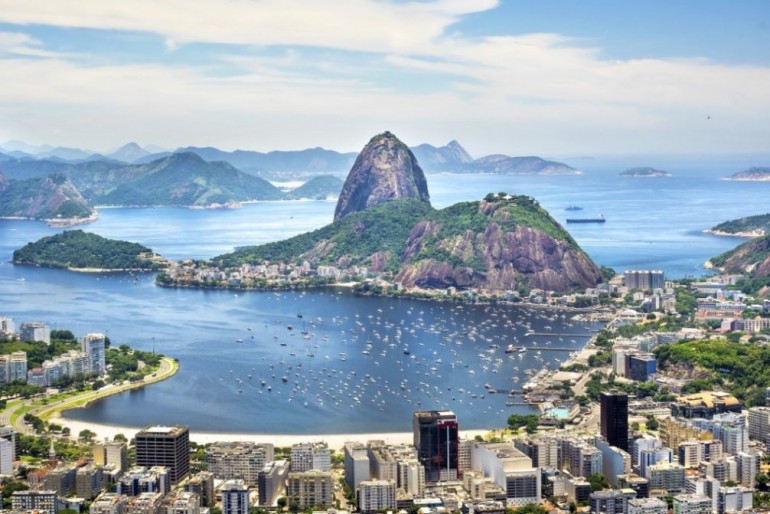Sponsored Listings:
The arrival of foreign tourists in Brazil increased by 8% in the first half of the year compared to the same period in 2017, according to preliminary numbers gathered by the Brazilian tourism ministry.
If this pace continues in the coming months, the hallmark of 7 million foreign visitors can be achieved for the first time in history, surpassing the flow recorded in years of mega-sporting events in the country – the 2014 World Cup and the 2016 Olympics in Rio.
Last year, the number of foreign tourists in the country was 6.6 million. The National Tourism Plan has 12 million tourists in 2022 as its target, generating US$19 billion in foreign currency – a bit more than three times the current amount.
The peak observed in the first half of the year is justified by two factors. One has to do with the greater inflow of South American neighbors, particularly Argentines, in the summer season. Another aspect is the deployment of the electronic visa for Americans, Canadians, Japanese and Australian.
Since the beginning of this year, the citizens of these four nationalities no longer need to visit Brazilian Consulates or hire dispatchers to obtain authorization to enter the country. Without so much bureaucracy, with everything done online, the visa issue can be done in 72 hours or less.
From 2017 to 2018, taking only into account the period from January to May, the number of visas granted to tourists of those four countries rose from 57.548 to 81.123. Approximately 75% of applications currently submitted are for e-visas (visas issued by electronic means).
Brazilian tourism minister, Vinicius Lummertz, has already presented a proposal to other cabinets to extend electronic visa system for visitors from two other countries with enormous potential: China and India.

In an interview, Lummertz commented that he has been holding conversations with his colleagues Eliseu Padilha (Civil House) and Carlos Marun (Secretary of Government) about the possibility of voting in favor of PL 2724/2015, in a concentrated effort at the National Congress in August. The bill modernizes the General Law of Tourism, restructures Embratur, gathers more resources for Brazil’s promotion abroad and allows foreign investment in airlines. But the setbacks at the Chamber of Deputies have been many. The urgency status has been requested for the proposal, but it failed.
“Brazil has the world’s largest potential for tourism, as pointed out by the World Economic Forum, but the conversion of that into foreign tourists and currencies is limited,” affirms Lummertz, who was the CEO of Embratur until April. The agency has only US$17 million to conduct campaigns to disseminate “Brazil’s brand” abroad. Mexico, for instance, has a budget of more than US$ 400 million.
This disparity of resources forces Brazil to have fewer marketing efforts. In Russia’s World Cup, a busy “Mexico House” attracted thousands of onlookers daily with their typical food stalls, mariachis and souvenirs in a crowded space next to Red Square in Moscow. Meanwhile, in a more modest campaign, Brazil invited the musician Diogo Nogueiro for a touring bus show, enveloped with images of beautiful natural landscapes. It succeeded but had less impact.
For the minister, the target of 12 million foreign tourists requires a continuous policy to raise the sector’s competitiveness. This includes initiatives such as stimulus for the operation of “low cost” airlines in Brazil, the end of the import tax for equipment used in theme parks, more concessions for natural parks, less bureaucratic standards for resorts – as we speak, it takes up to 12 years to inaugurate a hotel complex.
Source: tourism-review.com










